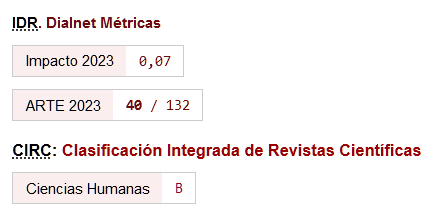The Birth of tanatorio. Funeral industry and architecture in Spain (1950-2000).
DOI:
https://doi.org/10.46661/atrio.8120Keywords:
Tanatorios, Spain, 20th century, Funeral Companies, Urban Funerary Culture, Architectural CharacterAbstract
The object of study of this article is the tanatorio, a relatively recent funeral type of building that emerged from the growing institutionalization of undertakers during the second half of the 20th century, and from the privatization of municipal services that occurred since the 1990s. We noticed that within the framework of those processes a mutual benefit was generated: while the business was renewed with new buildings, modern architectures found an opportunity to venture into a little explored field. The study of these new architectural programs allows us to broaden our knowledge of places of death in cities beyond cemeteries, problematizes the incidence of the funeral industry in urban culture, and situates the debate around the idea of character in buildings for death.
Downloads
References
Fuentes documentales:
Decreto 2569/1960, del 22 de diciembre de 1960. Boletín Oficial del Estado, no. 16, 1961, 863 (documento por el que se aprueba el Reglamento de Policía Sanitaria Mortuoria).
Decreto 2263/1974, del 17 de agosto de 1974. Boletín Oficial del Estado, no. 197, 17000-17002.
Ley de Bases de Sanidad Nacional, del 25 de noviembre de 1944. Boletín Oficial del Estado, no. 331, 8935.
Negociados de cementerios, 1947. Expediente N.º 82, Sección 4, 1948, Archivo Municipal de Sevilla, Sevilla.
Ordenanza reguladora de los servicios fúnebres, Artículo, no. 40. Ayuntamiento de Sevilla, 1997. Consultado el 22 de mayo de 2022. https://www.sevilla.org/ayuntamiento/unidad-organica/servicio-de-apoyo-juridico/ordenanzas-del-municipio-de-sevilla/o-reguladora-de-actividades-funerarias.pdf.
Proyecto para la construcción de almacenes y cocheras para la empresa pompas fúnebres “la nueva” sociedad limitada, Negociados de cementerios, 1947. Expediente, no. 148, Archivo Municipal de Sevilla, Sevilla.
Concurso para designar médicos. Gaceta Municipal de Barcelona, 5 de agosto de 1957, no. 31, 513. Consultado el 22 de mayo de 2022. https://bcnroc.ajuntament.barcelona.cat/jspui/simple-search?query=tanatori+sancho+de+avila&sort_by=dc.date.issued_dt&order=asc&rpp=10&etal=0&start=3010.
Gaceta Municipal de Barcelona, 5 de septiembre de 1960, no. 36, 756.
Gaceta Municipal de Barcelona, 30 de junio de 1962, no. 6, 259.
Soteras i Mauri, Josep. Anteproyecto de edificio para los servicios municipales de Pompas Fúnebres, 1959, Colegio de arquitectos de Cataluña (COAC), Archivo Histórico, ubicación C 2419/130, Barcelona.
Fuentes periodísticas y Web:
Casas, Alba. “La muerte de las pequeñas funerarias.” El País, 11 de diciembre de 2014. Consultado el 22 de mayo de 2022. https://elpais.com/politica/2014/12/10/actualidad/1418234705_513101.html.
Parrilla Valencia, José. “Los velatorios salen de las casas.” Levante, el mercantil valenciano, 19 de julio de 2010. Consultado el 20 de mayo de 2022. https://www.levante-emv.com/comunitat-valenciana/2010/07/19/velatorios-salen-casas-13129709.html.
Regàs, Lluís. “El Ayuntamiento culmina la venta de Serveis Funeraris de Barcelona.” Metropoliabierta, 5 de marzo del 2021. Consultado el 22 de mayo de 2022. https://www.metropoliabierta.com/informacion-municipal/barcelona-venta-serveis-funeraris-memora_37148_102.html.
Service Corporation International. Consultado el 18 de mayo de 2022. https://www.sci-corp.com/about/history.
Sust, Toni. “Barcelona creará una empresa funeraria pública para rebajar el precio de los entierros.” El Periódico.com, 11 de noviembre de 2016. Consultado el 22 de mayo de 2022.
Vidales, Raquel. “Toda una vida pagando el funeral.” El País, 31 de octubre de 2013. Consultado el 22 de mayo de 2022. https://elpais.com/sociedad/2013/10/31/actualidad/1383255311_752202.html.
Fuentes bibliográficas:
Andrés, Enrique. “El mercado de los muertos.” Revista de Construcción Arquitectura y Urbanismo (CAU), no. 17 (1973): 76.
Beard, Virginia, y William Burger. “Change and innovation in the funeral industry: A typology of motivations.” Omega Journal of Death and Dying 75, no. 1 (2017): 47-68. https://doi.org/10.1177/0030222815612605.
Bohigas, Oriol. “Los cementerios como catálogo de arquitectura.” Revista de Construcción Arquitectura y Urbanismo (CAU), no. 17 (1973): 57.
Dal Castello, David. La ciudad circular. Espacios y territorios de la Muerte en Buenos Aires, 1868-1903. Buenos Aires: Serie Tesis del IAA, 2017.
Dal Castello, David. “Muerte en el parque. Cementerios de Buenos Aires, 1935-1965.” Tesis Doctoral, Universidad de Buenos Aires, 2022.
Jencks, Charles. El lenguaje de la arquitectura posmoderna. 1977. Barcelona: Gustavo Gili, 1980.
Kahn, Louis. Forma y diseño. 1955. Buenos Aires: Nueva Visión, 2003.
Laderman, Gary. Rest in peace. A cultural history of death and the Funeral Home in Twentieth-Century America. New York: Oxford University Press, 2003.
Mitford, Jessica. The American way of death. 1963. New York: Crest Book, 1964.
Ramírez Calvo, Pablo. “Deriva de la laguna Estigia: tanatorio (1968-2018); estudio comparado.” Trabajo de fin de grado, Universidad Politécnica de Madrid, 2018.
Rossi, Aldo. “La arquitectura análoga. Textos. Obras.” Revista Summarios, no. 22 (1978): 136-145.
Saramago, José. Las intermitencias de la muerte. Colombia: Alfaguara, 2005.
Szambién, Werner. Simetría, gusto, carácter. Teoría y terminología de la Arquitectura en la Época Clásica 1550-1800. Madrid: Akal, 1993.
Tornos Mas, Joaquín. “Liberalización de servicios públicos locales y modalidades de actuación local en los sectores liberalizados.” Revista de Estudios de la Administración Local y Autonómica, no. 7 (2017): 103-114. https://doi.org/10.24965/reala.v0i7.10429.
Trompete, Pascale, “Institutional change and competition dynamics on local markets. The history of the Funeral Market in France (XIX-XXe).” Hal, (julio de 2009), 25.
Vidler, Anthony. “The idea of Type.” Oppositions, no. 8 (1977): 95-115 y 147-150.
Published
How to Cite
Issue
Section
License
Copyright (c) 2023 David Dal Castello

This work is licensed under a Creative Commons Attribution-NonCommercial-ShareAlike 4.0 International License.
Los autores/as que publican en Atrio. Revista de historia del arte están de acuerdo con los siguientes términos:
- Los autores/as conservan los derechos de autor y garantizan a la revista el derecho de ser la primera publicación del trabajo al igual que licenciado bajo una licencia de Creative Commons Attribution-NonCommercial-ShareAlike 4.0 International License que permite a otros compartir el trabajo con un reconocimiento de la autoría de este y la publicación inicial en esta revista.
- El autor/a o cedente del material que se entrega para su publicación autoriza a la revista para que publique, sin obligación alguna (económica o de otra naturaleza), el contenido del referido manual tanto en formato papel, como en digital, así como en cualquier otro medio. Esta cesión de uso del material entregado comprende todos los derechos necesarios para la publicación del material en la revista. Quedan garantizados, simultáneamente, los derechos morales del autor
- El autor/a o cedente es plenamente consciente y está de acuerdo con que todos o cualesquiera de los contenidos proporcionados, formarán una obra cuyo uso se cede a la revista para su publicación total o parcial.
- El autor/a o cedente garantiza ser el titular de los derechos de Propiedad Intelectual sobre los contenidos proporcionados, es decir, sobre el propio texto e imágenes/fotografías/obras fotográficas que se incorporan en su artículo.
- El autor/a o cedente asegura y garantiza: (i) que todo el material enviado a la revista cumple con las disposiciones legales aplicables; (ii) que la utilización de cualquier material protegido por derechos de autor y derechos personales en la concepción del material se encuentra regularizada; (iii) que obtuvo las licencias de derechos, permisos y autorizaciones necesarias para la ejecución del material, inclusive los derechos de imagen, si fueran aplicables; y (iv) que el material no viola derechos de terceros, incluyendo, sin limitarse a estos, los derechos de autor y derechos de las personas.
- El autor/a o cedente, exime a la revista de toda y cualquier responsabilidad con relación a la violación de derechos de autor, comprometiéndose a emplear todos sus esfuerzos para auxiliar a la revista en la defensa de cualquier acusación, medidas extrajudiciales y/o judiciales. Asimismo, asume el abono a la revista de cualquier cantidad o indemnización que esta tenga que abonar a terceros por el incumplimiento de estas obligaciones, ya sea por decisión judicial, arbitral y/o administrativa.













